What’s the ROI of Automated Pallet Changing Machines in Romania's Cost-Competitive Sector?
In a demanding market like Romania's manufacturing sector, every operational decision is under a microscope. You are constantly looking for ways to trim costs and boost output without sacrificing quality. You might see your team manually transferring goods from one pallet to another and think it's just a small, necessary part of the process. But this seemingly minor task is a silent killer of efficiency. It creates bottlenecks, introduces risks of product damage and worker injury, and slowly eats away at the profit margins you work so hard to protect. This manual process is an anchor holding back your true production potential. The solution isn't to work harder; it's to work smarter. An automated pallet changing machine is not just another piece of equipment. It is a strategic investment that directly tackles these hidden inefficiencies, delivering a clear and compelling Return on Investment (ROI) by transforming a cost center into a competitive advantage.
The Return on Investment (ROI) for an automated pallet changing machine in Romania's cost-competitive sector is typically realized within 12 to 24 months. This rapid payback is driven by significant reductions in manual labor costs, a near-elimination of product damage during transfer, and a substantial increase in operational throughput and efficiency. For any high-volume facility, this automation translates directly into lower operational expenses and higher profitability.
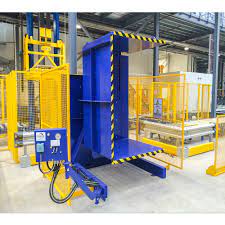
You can see the potential for a quick return. But as a leader, you need more than a simple promise. You need to understand the mechanics behind the numbers. How exactly does this machine save money? Where do the efficiency gains come from? I've been in your shoes, analyzing capital expenditures and justifying them to a board or to myself. Let's break down the value proposition piece by piece, so you can see how this investment strengthens your entire operation from the ground up.
How do automated pallet changers directly impact labor costs and efficiency?
You watch your warehouse floor and see a team of two, maybe three, employees working hard to move heavy boxes from a wooden pallet to a plastic one. It's slow, physically demanding work. You know this is a necessary step to meet customer or internal hygiene requirements, but you also see the reality: your production line is waiting. This manual station has become a chokepoint. The problem gets worse when you consider the human factor. People get tired, their pace slows down, and the risk of a costly back injury is always present. A single injury can lead to lost workdays, insurance claims, and a dip in team morale. You are paying for hours of labor that are not directly adding value, but simply moving things. An automated pallet changer transforms this entire scenario. It introduces a level of speed and consistency that humans simply cannot match, turning a labor-intensive bottleneck into a smooth, efficient, and predictable part of your workflow.
Automated pallet changers directly reduce labor costs by allowing a single operator to manage a task that previously required multiple workers. This frees up valuable personnel for more complex, value-added roles. Efficiency is dramatically increased because a machine can transfer a full pallet load in under 60 seconds, a process that might take a manual team 10-15 minutes. This consistent, high-speed cycle eliminates production delays and boosts overall throughput.
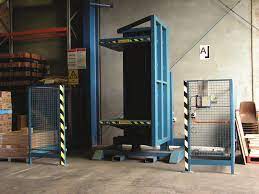
Dive Deeper: The Tangible Gains in Labor and Speed
Let's move from concept to concrete numbers. As an engineer and a factory owner, I live by data. The business case for automation in pallet handling is built on a foundation of clear, measurable improvements.
The Simple Math of Labor Savings
The most immediate impact is on your payroll. A manual pallet changing process is expensive. Consider a typical scenario:
- Manual Team: Requires 2-3 workers.
- Automated System: Requires 1 operator to load and start the machine.
Let's assume a conservative labor cost in Romania, including salary and benefits, of €10 per hour per employee. If you run two shifts, five days a week, the cost of a two-person manual team adds up quickly. With an automated system, you reassign at least one of those workers per shift. This isn't about eliminating jobs; it's about optimizing your workforce. That employee can be retrained for quality control, machine maintenance, or another role that actively contributes to your bottom line. I've seen this in many factories I've worked with. The best workers from the manual teams often become the most skilled machine operators because they understand the product and the process flow.
| Metric | Manual Process | Automated Process | Annual Savings (2 shifts, 250 days) |
|---|---|---|---|
| Workers Required | 2-3 Workers | 1 Operator | ~1-2 Full-Time Employees |
| Labor Cost/Shift | €160 (2 workers x 8 hrs x €10) | €80 (1 operator x 8 hrs x €10) | €20,000+ |
| Personnel Focus | Strenuous Manual Labor | System Oversight & Value-Add Tasks | Shift from physical liability to asset |
Measuring the Quantum Leap in Efficiency
Efficiency isn't just about speed; it's about predictability. A machine performs its task with the same precision and timing every single time.
- Manual Time: A team might take anywhere from 5 to 20 minutes to transfer a pallet load, depending on the product's weight, stability, and the team's fatigue level. This variability makes planning very difficult.
- Automated Time: A pallet changer executes a full cycle in 45-60 seconds. Every time.
This consistency has a ripple effect throughout your facility. When you can guarantee that a pallet will be ready every minute, you can optimize your entire logistics chain. Forklift drivers aren't waiting. The outbound truck is loaded faster. The production line keeps moving. This is how you achieve the goal of 95% effective run time. The machine doesn't just improve one task; it lubricates the gears of your entire operation.
As a business owner, you are very familiar with direct costs like labor and materials. You track them on spreadsheets and in your ERP system. But what about the costs that don't show up so clearly? I'm talking about the money that bleeds from your operation through small, recurring problems. A few crushed boxes here, a contaminated batch there, a minor workplace injury—they seem like the "cost of doing business." But they add up. These hidden costs are a result of process variability and manual handling. When people are lifting, pushing, and restacking heavy loads, things inevitably get dropped, scraped, or damaged. Wooden pallets splinter, creating contamination risks. The constant physical strain leads to injuries. These are the invisible anchors dragging down your profitability. By standardizing and automating the pallet transfer process, you do more than just speed it up. You systematically eliminate these hidden costs, plugging financial leaks you may not have even known you had.
Switching to automated pallet changing eliminates numerous hidden costs. These include the expense of replacing products damaged during manual transfer (often 1-3% of product value), the costs associated with contamination from wood splinters or debris, and the significant financial and operational impact of worker compensation claims from lifting-related injuries. It also removes inefficiencies like production downtime caused by inconsistent manual handling speeds.
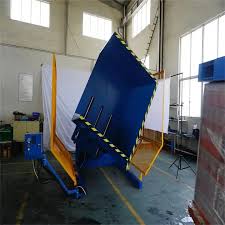
Dive Deeper: Uncovering and Eradicating Invisible Expenses
Let's put on our engineer hats and dissect these hidden costs. When I was starting my own factory, I learned that what you can't measure, you can't manage. So, let's measure them.
The High Cost of Product Damage
This is often the largest hidden cost. Imagine you are handling pallet loads of sensitive electronics, bagged powders, or high-value steel coils. Even minor damage can render the product unsellable.
- The Cause: Manual handling is imprecise. A forklift driver might approach too fast. A worker might lose their grip. A stack might be unstable and topple during restacking.
- The Solution: An automated pallet inverter clamps the load securely with controlled, even pressure. It then smoothly rotates the load 180 degrees to place it on the new pallet. The entire process is gentle and controlled, eliminating the shocks and impacts of manual transfer.
Let's do some quick math. If your facility in Romania handles 500 pallets per day, and each pallet holds €2,000 worth of goods, that's €1,000,000 in product value moving through your system daily. A conservative manual damage rate of just 0.5% means you are losing €5,000 every single day. That's €1.25 million a year in lost revenue. Automation can reduce that damage rate to virtually zero.
The Price of Contamination and Injury
These costs are less frequent but can be catastrophic.
- Contamination: In industries like food, pharmaceuticals, or high-grade materials, a single wood splinter from a broken pallet can lead to a rejected batch, costing tens of thousands of euros and damaging your reputation with a key client. Automation provides a clean break, moving the load from wood to a sanitized plastic or metal pallet without contact.
- Workplace Injury: As a CEO like Javier, you are responsible for your people's safety. Musculoskeletal injuries from manual handling are one of the most common and expensive types of workplace incidents. The direct costs (medical bills, insurance premium hikes) are significant, but the indirect costs (lost productivity, hiring and training a replacement, lower morale) are often even higher. A pallet changer completely removes the physical strain from your employees.
| Hidden Cost Category | Source in Manual Process | How Automation Eliminates It |
|---|---|---|
| Product Damage | Dropping, crushing, shifting loads | Gentle, controlled clamping and rotation |
| Contamination | Wood splinters, dust, broken pallet debris | Clean transfer with no load disruption |
| Workplace Injury | Straining, lifting, repetitive motion | The machine does all the heavy work |
| Production Delays | Inconsistent speed, worker fatigue | Predictable, sub-60-second cycle time |
| Pallet Management | Inefficient sorting and handling of bad pallets | Streamlines flow to designated pallet zones |
How does automation in pallet handling improve product quality and reduce damage?
You invest heavily in your production process to ensure the highest quality for your products. Whether you're making precision-engineered car parts or perfectly sealed food products, quality is your brand's promise to the customer. But then, in the final stages of handling and logistics, that promise is put at risk. A forklift tine pierces a box. A heavy load shifts during manual restacking, crushing the items at the bottom. The entire load arrives at the customer's warehouse looking unstable and unprofessional. This is incredibly frustrating. All your hard work in manufacturing can be undone in the last 100 feet of your facility. It's a critical final step that is too often overlooked. True quality control must extend all the way until the product is safely on the truck. Automation in pallet handling is the key to ensuring that the quality you engineer into your product is the quality that your customer receives.
Automation in pallet handling improves product quality by replacing inconsistent manual labor with precise, repeatable mechanical actions. Automated pallet changers use adjustable, soft-touch clamping systems and smooth, controlled rotation to transfer loads without impact or pressure damage. This preserves the integrity of both the product and its packaging, reducing damage rates by over 95% and ensuring the load is stable and secure for shipping.
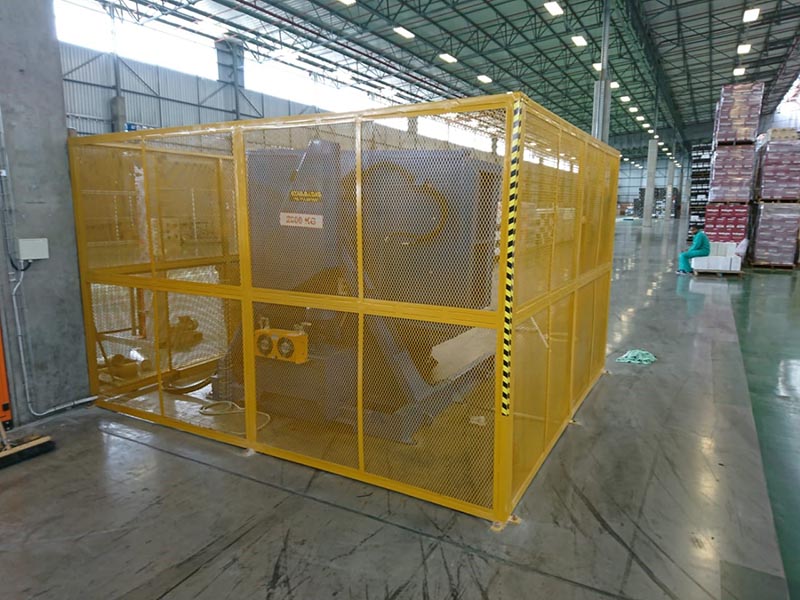
Dive Deeper: Engineering for Perfection in a Final Step
As an engineer myself, I admire well-designed systems. The beauty of a pallet changing machine lies in its purpose-built design to protect your assets. It's not a general-purpose tool like a forklift; it is a specialist device designed for one task: perfect, damage-free transfers.
Precision Mechanics for Gentle Handling
Think of the difference between a sledgehammer and a surgical tool. Both apply force, but the control and precision are worlds apart.
- Controlled Clamping: The machine doesn't just grab the load. It uses pressure-sensitive clamping walls that apply just enough force to secure the product without crushing it. For a business like Javier's steel mill, this means no more scratched coils. For a food producer, it means no more dented cans or broken jars. The pressure is adjustable for different product types, from robust industrial goods to fragile items.
- Smooth Rotation: The transfer happens through a fluid, 180-degree rotation. The load is held securely in place as it is inverted. There are no sudden drops, shoves, or impacts. The entire stack remains perfectly aligned, just as it came off the production line. This smooth motion is something that even the most skilled forklift operator cannot replicate consistently.
Ensuring Load Stability for Downstream Success
A key benefit that is often underestimated is the improvement in load stability.
- Perfect Squaring: When the machine places the load on the new pallet, it is perfectly centered and squared. A squared, stable load is safer to handle, easier to stretch wrap effectively, and fits perfectly into automated storage and retrieval systems (AS/RS).
- Foundation for Further Automation: If you are moving towards a more automated warehouse, load stability is non-negotiable. Robots and automated systems require predictability. An unstable or poorly centered pallet can bring an entire automated system to a halt. The pallet changer is a foundational piece of equipment that enables successful downstream automation, directly contributing to goals like digital transformation.
| Automation Feature | Mechanical Function | Impact on Product Quality & Stability |
|---|---|---|
| Adjustable Clamping Pressure | Sensors detect load resistance and apply pre-set force. | Prevents crushing of packaging and product. Secures a wide variety of load types. |
| Full Platform Support | The load is supported from the top and bottom during rotation. | Eliminates stress on the load and prevents any internal shifting or collapsing. |
| Controlled 180° Inversion | A powerful but smooth hydraulic or electric motor rotates the entire assembly. | Guarantees a gentle transfer without any jarring impacts that can cause damage. |
| Automatic Load Centering | The machine inherently places the inverted load in the center of the new pallet. | Creates a stable, safe load that is ready for stretch wrapping and shipping. |
What is the typical payback period for an automated pallet changer in a high-volume facility?
As a CEO or factory owner, every investment decision comes down to one critical question: What is the return? You have to justify every major capital expenditure, and in a cost-competitive environment like Romania, the pressure to show a fast payback is intense. You can't afford to have capital tied up in an asset that doesn't quickly start paying for itself. You look at the price tag of a new machine and weigh it against the immediate demands on your budget. The fear is that the payback period will be too long, making the investment risky in a volatile market. You need to be certain that the machine will not just be an operational improvement, but a clear financial win. I understand this completely. When I established my own factory, I analyzed every purchase with the same rigorous scrutiny. The good news is that for automated pallet changers in high-volume settings, the payback isn't a long-term dream. It's a short-term reality.
In a typical high-volume facility, such as a busy manufacturing plant or distribution center in Romania, the payback period for an automated pallet changer is between 12 and 24 months. This rapid return is achieved through a powerful combination of direct labor savings, the elimination of product damage costs, and increased overall plant throughput. The more you operate, the faster you get your money back.
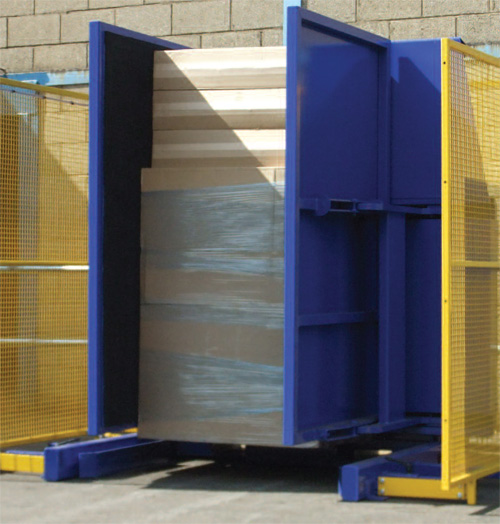
Dive Deeper: Calculating Your Path to Profitability
The payback calculation is not complicated. It's a straightforward analysis of costs versus savings. As a data-driven leader like Javier, you'll appreciate this transparent approach. Let's walk through a sample calculation for a hypothetical Romanian facility.
A Sample ROI Calculation
First, we establish some reasonable assumptions for a two-shift operation:
- Initial Investment (Machine Cost): €50,000 (This includes the machine, delivery, and installation)
- Labor Cost: €10/hour per employee
- Manual Process: 2 workers
- Automated Process: 1 operator
- Product Damage Rate (Manual): 0.5%
- Value of Goods Handled per Day: €500,000
- Operational Days per Year: 250
Now, let's calculate the annual savings:
- Annual Labor Savings: You are reassigning one worker per shift.
- Savings per shift = 1 worker 8 hours/shift €10/hour = €80
- Savings per day (2 shifts) = €160
- *Total Annual Labor Savings = €160/day 250 days = €40,000**
- Annual Product Damage Savings:
- Daily Loss (Manual) = €500,000 * 0.5% = €2,500
- Assuming automation reduces this by 95%...
- Daily Savings = €2,500 * 95% = €2,375
- *Total Annual Damage Savings = €2,375/day 250 days = €593,750*
(Even if we use a much more conservative damage rate of 0.1%, the annual savings are still over €118,000)*
Let's use the more conservative labor and a very modest damage saving estimate for our final calculation.
| Cost/Saving Category | Calculation | Example Value (€) |
|---|---|---|
| Initial Investment | (Machine + Installation Cost) | - €50,000 |
| Annual Labor Savings | (1 worker/shift x 16 hrs/day x €10/hr x 250 days) | + €40,000 |
| Annual Damage Savings (Modest) | (Assuming just €100/day saved) | + €25,000 |
| Total Annual Savings | (Labor Savings + Damage Savings) | €65,000 |
| Payback Period (Months) | (€50,000 / €65,000) * 12 | ~9.2 Months |
As you can see, even with conservative estimates, the payback is incredibly fast. The higher your volume, the more valuable your product, and the more shifts you run, the shorter this period becomes.
My Insights
You have seen the numbers and the analysis. As a CEO, an engineer, and a factory owner, you know that data is essential for making sound decisions. But I also know, from my own journey from employee to owner, that some things can't be captured on a spreadsheet. You're not just buying a piece of steel that moves pallets. You're making a decision that impacts your people, your processes, and your company's future. You might be thinking about the challenges: "Will this machine integrate with my aging equipment? Who will train my team? What happens if it breaks down? Is the supplier just trying to make a sale, or will they be there for me in two years?" These are the questions that keep a good leader up at night. They are not questions about a machine; they are questions about partnership. And this is where I want to share my most important insight with you.
My core insight is this: An automated pallet changer is more than a tool for ROI; it is a catalyst for strategic operational improvement. The real value is not just in the machine itself, but in the partnership you form with a supplier who understands your world. It's a manageable first step that opens the door to greater efficiency, safety, and the digital transformation you are aiming for.
Dive Deeper: From a Simple Machine to a Strategic Advantage
When I started my journey, I was an engineer on the factory floor. I saw firsthand how outdated processes and unreliable equipment created frustration and held back growth. When I built my own factory, I promised myself I would build a system, not just a collection of machines. This philosophy is the foundation of SHJLPACK.
This is About a Partnership, Not a Purchase
A company like yours, with its scale and complexity, doesn't need a supplier. You need a partner. You need someone who will come to your plant, understand the unique challenges of handling your specific product—be it steel coils or consumer goods—and then work with you to design a solution. This is what we do.
- We Listen First: We start by analyzing your current process, your goals (like lowering energy costs and reducing emissions), and your constraints.
- We Co-Design: The solution is tailored to your needs. This could mean specific attachments for your product, integration with your existing conveyor lines, or safety features that meet your strict standards.
- We Support for the Long Haul: The relationship doesn't end with the installation. We provide comprehensive training for your operators and maintenance staff. We offer predictive maintenance support and are always available to help you adapt the system as your business grows and changes. This is the "Total Solution" our slogan promises.
A Concrete Step Towards Industry 4.0
You have a goal to deploy MES, IoT, and big data. That can feel like a massive, daunting project. An automated pallet changer is a perfect, contained project to begin that journey.
- Data Generation: The machine is a source of valuable data. We can equip it with IoT sensors to track cycle times, number of pallets processed, uptime, and error codes.
- System Integration: This data can be fed directly into your MES or plant management software. Suddenly, you have real-time visibility into a critical part of your logistics chain. You can see bottlenecks as they form and make data-driven decisions to resolve them.
This machine becomes more than a standalone unit; it becomes a smart node in your connected factory, providing the tangible results and learnings you need to confidently pursue your broader digital transformation goals.
| The Partnership Value | Our Role (The Partner) | Your Benefit (The CEO) |
|---|---|---|
| Consultation | We perform an on-site analysis of your workflow, challenges, and goals. | You get a solution designed for your specific needs, not an off-the-shelf product. |
| Customization | Our engineers design the machine to handle your product and integrate with your layout. | Maximizes efficiency and safety, addressing your unique operational realities. |
| Implementation | We manage installation, commissioning, and comprehensive operator training. | A smooth, turnkey start-up with minimal disruption to your operations. |
| Long-Term Support | We provide ongoing maintenance, spare parts, and upgrade advice. | Peace of mind and a system that evolves with your business, protecting your investment. |
Conclusion
Investing in an automated pallet changer delivers a fast ROI by boosting efficiency and quality. It is a smart, strategic step to secure your competitive edge in demanding markets.



